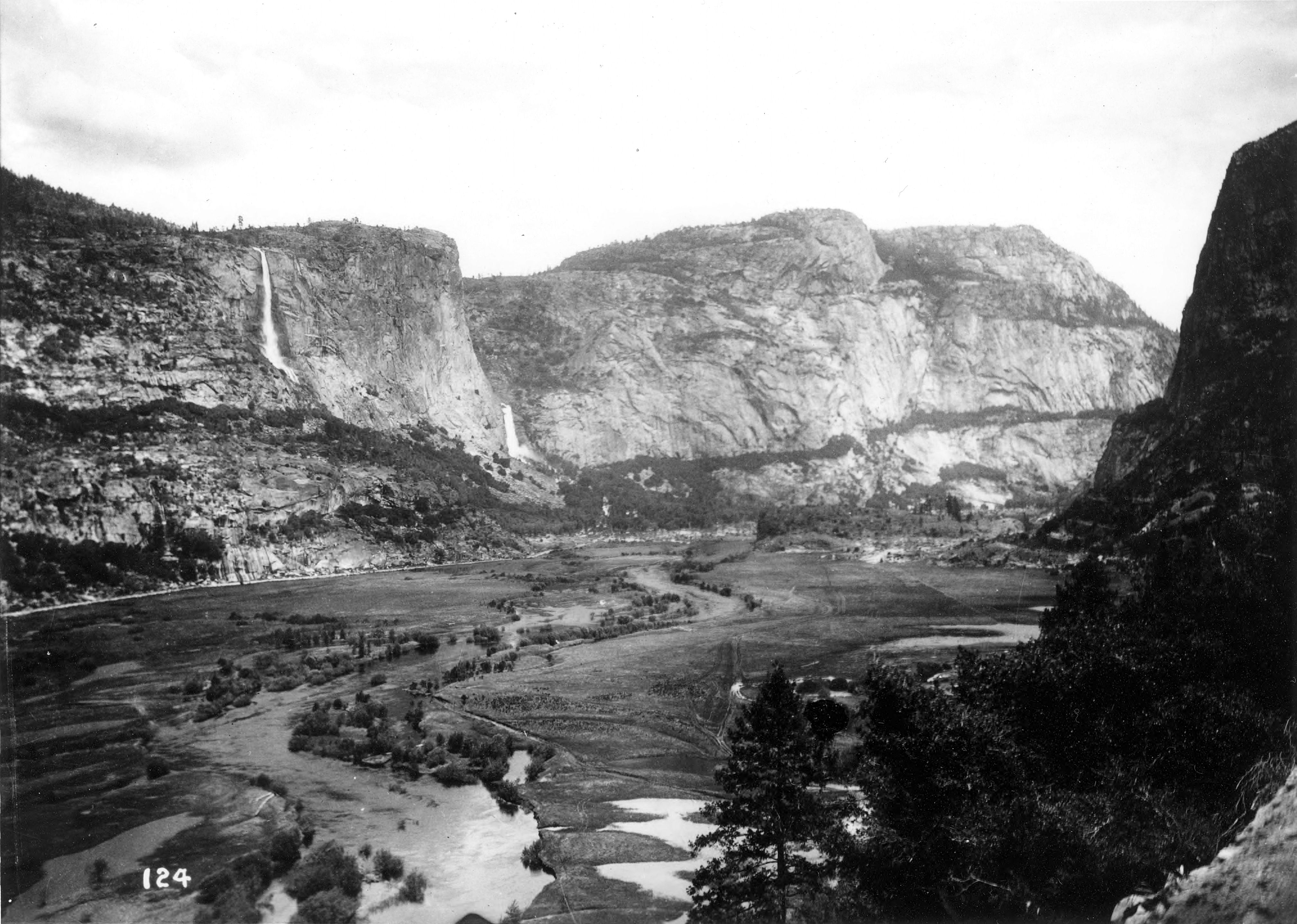 |
| John Muir. By Francis M. Fritz on WikiCommons. |
 |
| Hetch Hetchy. By Isaiah West Taber on WikiCommons. |
 |
| Muir and Roosevelt at Yosemite Valley. By Underwood & Underwood on WikiCommons. |
Hetch Hetchy is another big controversial topic Muir was fighting against. Gifford Pinchot was head for the O'Shaunessy Dam to be built in Yosemite. Pinchot was a conservationist and First Chief of the United States Forest Services. His definition of conservation is "the wise use of the earth and itsresources for the lasting good of men" (A Legacy of Conservation). This conflicted with Muir's view of not wanting for the beauty of the place to be destroyed for the use of humans. Through the USFS, Pinchot worked with President Roosevelt to manage forests. Even though Roosevelt had worked with both men he ultimately sided with Pinchot and signed off on the approval of the dam for the use of the city of San Francisco for both water and electrical power.
 |
| Painting of Hetch Hetchy done by William Keith. |
Hetch Hetchy was once one of the Earth's most beautiful places, a glacier carved valley filled with waterfalls and wildlife as shown in this painting done by William Keith. This painting represents what Muir was trying to keep alive which can now only seen through art pieces as it now lies underneath a reservoir of water to beforgotten. By creating the dam, the nature wildlife was disturbed by the heavy machinery needed to build it. This denied the original protection given to the area of protecting the wilderness within for itself, not human use. Hetch Hetchy brought up a lot of conservation and preservation issues to the eyes of the public. While the dam remains a scar on the national parks system, it brought more people into knowledge leading for Congress to pass the National Park Service Act to ensure that parts would be preserved and managed for the enjoyment of all (History of the Valley). Muir has had an immense impact on the environment and continues to this day. He inspired others to want to join in protecting the wilderness. He fought for something he loved and wanted for others for many, many years to come to be able to continue to enjoy.
Continuing after Muir's death, there was still opposition to the dam. In 1987, the Secretary of the Interior proposed for the restoration of the Hetch Hetchy Valley which the Sierra Club's Board of Directors agreed on. They wanted the valley to be restored to its natural condition to allow "one of nature's rarest and most precious mountain temples" for public enjoyment, scientific exploration and it its natural ecological and biological systems to be able to be restored. Since 1999, over 850 dams have been removed from rivers allowing for ecological restorations of the area (Hetch Hetchy). The fight still continues to this day on the attempt to remove the Hetch Hetchy dam and restore the area.
Comments
Post a Comment